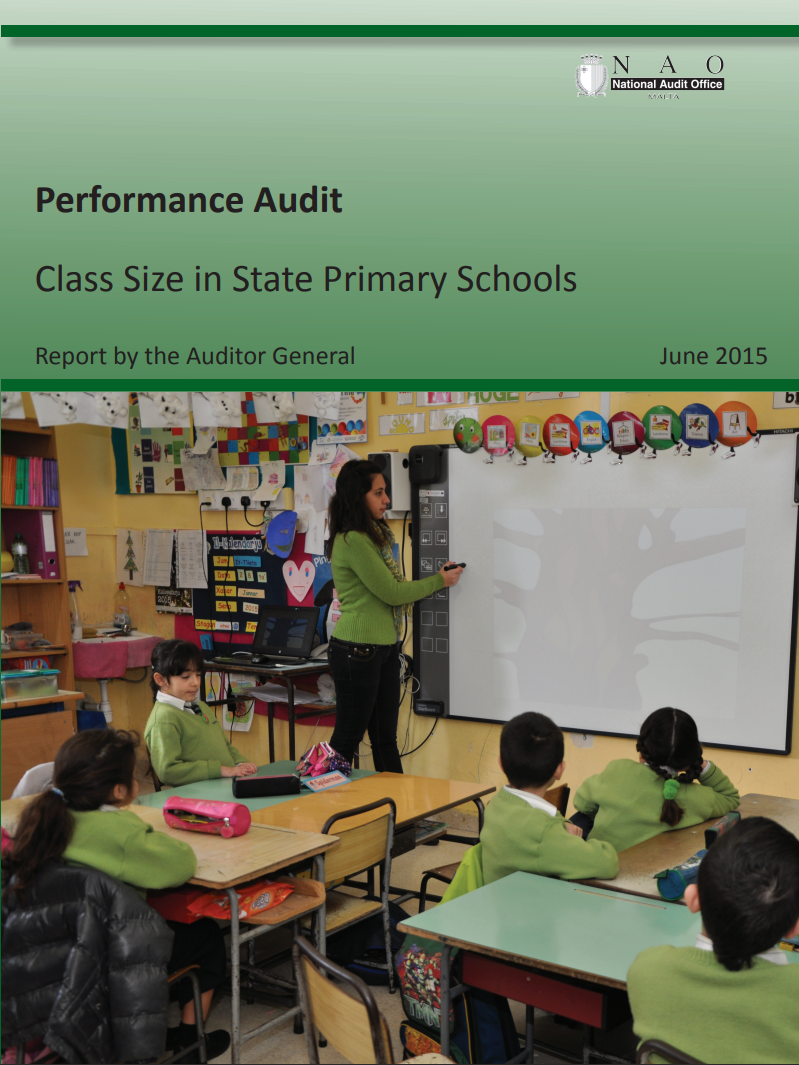- Home
- Publications
Publications
You may browse through our online list of NAO publications which include audit reports and annual reports. The audit reports are categorised according to the Classification of the Functions of Government (COFOG) developed by the OECD.
All Publications- Categories
- Publications Archive
- Events
- Careers
- About Us

Press Release
The Auditor General questioned the financial feasibility of certain state primary schools, particularly those located in Gozo. During scholastic year 2013-2014, annual operational costs ranged from €2,660 to €9,162 per student. The higher costs materialize through the resultant diseconomies of scale associated with classes having a significantly lower number of students than the maximum permitted by law for the various educational levels or the national class-size average, which during the scholastic year amounted to 16 students.
Apart from raising cost efficiency issues, as has resulted from various studies carried out abroad, smaller classes do not offer additional academic or social advantages to students. To this end, this Report concluded that there was no correlation between the number of students in each classroom and the standardized average scores attained by Years 4, 5 and 6 students in three core subjects, namely Maltese, Mathematics and English. This conclusion is similar to other studies conducted by the Department for Education (United Kingdom), which focused on class size in primary schools within the Organisation for Economic Co-operation and Development (OECD) countries.Demographic shifts is the main factor leading to a continuously changing demand for state primary school services, where a net decrease in the student population in a number of localities materialised. Moreover, the demand for these services is also influenced by requests for student transfers from one school to another. This state of affairs, coupled with the historical practice of maintaining a state primary school in almost every town and village, has resulted in operating low population schools with classes having a low number of students, resulting in higher costs per student.
Rationalising school populations and class sizes is also subject to limitations emanating from the existing school infrastructure. Most of the buildings currently utilised as primary schools were constructed over 50 years ago, and consequently present various limitations in terms of the facilities offered and their respective student capacities.
The Report highlighted the potential benefits of merging low populated primary schools. Four case studies, which considered potential school amalgamation options, assumed various levels of investment ranging up to the construction of a new school as well as the ensuing additional overheads, such as transportation costs. These studies showed that, solely on the basis of operational cost savings, projects to merge low populated schools proved financially feasible. The viability of such projects would become more pronounced when the opportunity cost associated with the vacated building is considered.
The foregoing implies that the Education Directorates are to be encouraged to further explore strategies to rationalize class size in state primary schools. Nevertheless, while addressing financial sustainability issues, such strategies are also to retain flexibility to cater for the different contexts and social realities influencing the provision of primary education. Within such an intricate environment, it is critical to secure the input and cooperation of all stakeholders.
